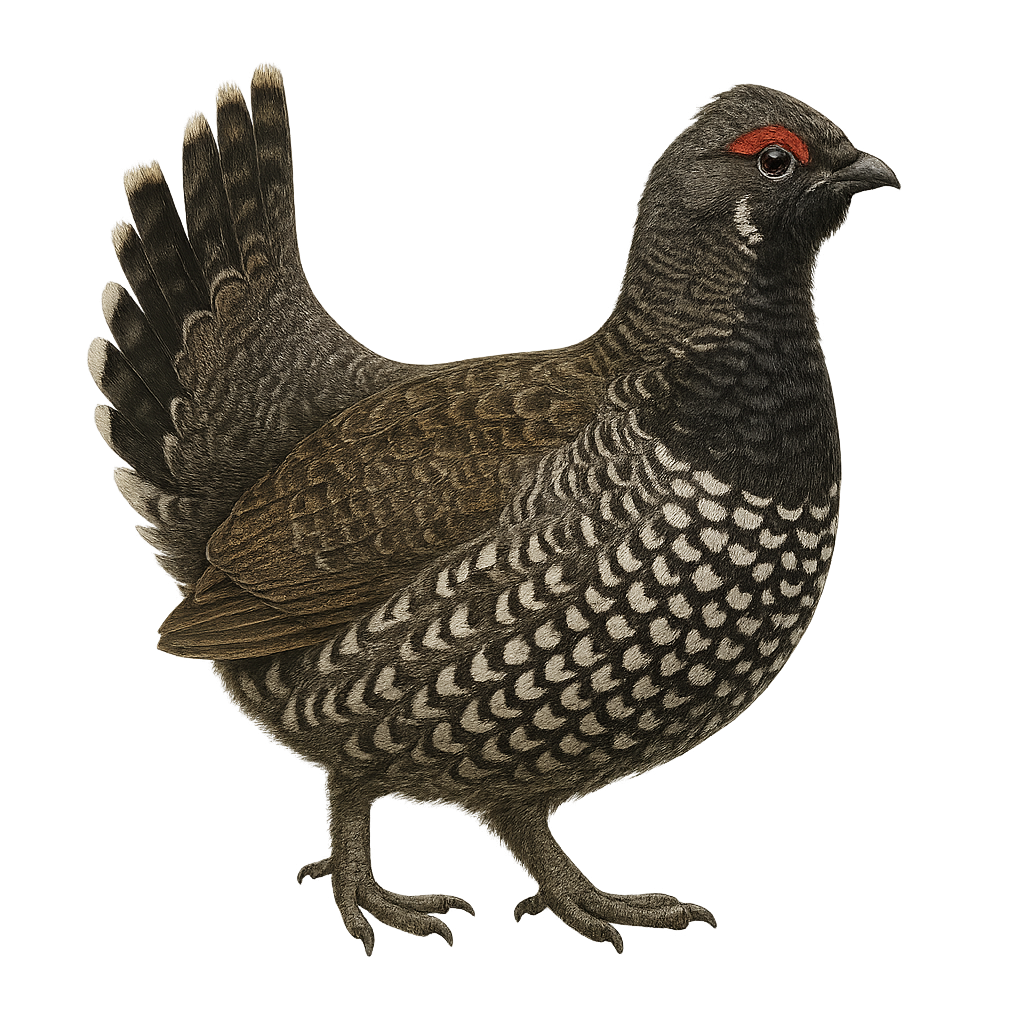Your wildlife photography guide.
Explore the siberian grouse in detail, study its behavior, prepare your shots.
Where to observe and photograph the siberian grouse in the wild
Learn where and when to spot the siberian grouse in the wild, how to identify the species based on distinctive features, and what natural environments it inhabits. The WildlifePhotographer app offers tailored photography tips that reflect the siberian grouse’s behavior, helping you capture better wildlife images. Explore the full species profile for key information including description, habitat, active periods, and approach techniques.
Siberian Grouse
Scientific name: Falcipennis falcipennis

IUCN Status: Near Threatened
Family: PHASIANIDAE
Group: Birds
Sensitivity to human approach: Suspicious
Minimum approach distance: 10 m
Courtship display: May to June
Incubation: 21-23 jours
Hatchings: May to July
Habitat:
Coniferous forests, taiga, dense woodlands
Activity period :
Primarily active during the day, with peak activity in the morning and late afternoon.
Identification and description:
The Siberian Grouse, or Falcipennis falcipennis, is a bird from the Phasianidae family, mainly found in the boreal forests of the Russian Far East. This medium-sized bird, measuring about 38 to 45 cm in length, is notable for its dark plumage and subtle patterns that allow it to blend into its surroundings. Males display black feathers with metallic sheens, while females have more brownish plumage. The Siberian Grouse is a sedentary bird, preferring dense coniferous forests where it feeds primarily on buds, leaves, and berries. Although discreet, it is sometimes observed during its spring courtship displays.
Recommended lens:
400mm – adjust based on distance, desired framing (portrait or habitat), and approach conditions.
Photography tips:
To photograph the Siberian Grouse, focus on the early morning hours when the light is soft and the bird is most active. Use a telephoto lens of 400mm or more to capture detailed images without disturbing the bird. Approach slowly and maintain a safe distance of at least 10 m to avoid startling it. Coniferous forests provide an ideal natural backdrop for your shots, so play with the contrasts of light and shadow to highlight the male's dark plumage and metallic sheens.
The WildlifePhotographer App is coming soon!
Be the first to explore the best nature spots, track rutting seasons, log your observations, and observe more wildlife.
Already 1 430 wildlife lovers subscribed worldwide

